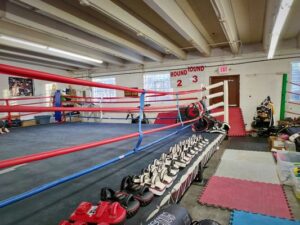Print design remains a timeless and crucial aspect of marketing, branding, and communication. Even in an increasingly digital world, businesses and creatives recognize the enduring power of tangible designs that leave a lasting impression. Whether you’re designing business cards, brochures, posters, or packaging, mastering print design opens up endless possibilities for creativity and connection.
This guide will walk you through the essential elements of print design, with an in-depth look at critical keywords like “print design layout” and “print design inspiration.” By the end, you’ll have actionable strategies to create print designs that truly shine.
What Is Print Design?
Print design refers to the creation of visual materials intended for physical printing rather than digital display. From billboards to magazines, print design encapsulates a broad spectrum of applications. This medium often plays a pivotal role in enhancing brand identity and effectively communicating messages.
While digital design caters largely to screens, print design focuses on tactile engagement. This versatility can make it uniquely impactful, bringing art and messaging into real-world spaces.
Print Design Layout
One of the first and most essential considerations for successful print design is the layout. Print design layout refers to the arrangement of visual elements on a page, including text, images, shapes, and whitespace. This aspect of print design can make or break the effectiveness of your project.
Key tips for mastering print design layout:
- Understand the goal of your design before starting. Is it to inform, persuade, or entertain?
- Use grids for alignment. Grids help create structure, ensuring that elements remain balanced and visually appealing.
- Establish a visual hierarchy by making key elements like headlines or calls-to-action stand out.
- Mind the whitespace. Empty space isn’t wasted space—it improves readability and gives your design a polished, professional appearance.
Commonly used tools for print design layout include Adobe InDesign, Canva, and Figma. Regardless of the software, remember that simplicity is often more impactful than complexity.
Why Is Print Design Still Relevant?
The rise of digital marketing might make print design seem outdated to some, but the data tells a different story. According to Forbes, print materials can result in a 45% higher response rate compared to digital efforts alone. The tactile nature of print creates a deeper emotional connection, making it an invaluable tool for brand storytelling.
Additionally, print design offers:
- Tangibility: Unlike digital ads that can disappear with a single swipe, printed materials are physical and can leave long-lasting impressions.
- Credibility: Consumers often perceive printed materials as more trustworthy and professional.
- Creative freedom: Print offers boundless opportunities, from textured papers to unconventional folds.
Types of Print Design Projects
The world of print design is vast and versatile. Below are some of the most popular types of print projects and their unique considerations:
Brochures and Flyers
These are ideal for conveying a large amount of information compactly. The key is striking the right balance between text and visual elements.
Pro Tip: Use folds strategically to guide the reader’s eye across the page.
Posters
Whether for events, advertisements, or decor, posters focus on visual impact. Use bold graphics and limited text to grab attention instantly.
Pro Tip: Test print your design at actual size before finalizing to ensure that colors and elements translate well.
Business Cards
A business card is often your brand’s first impression. Keep the design simple yet memorable by incorporating unique features like embossed logos or metallic finishes.
Pro Tip: Opt for premium paper stock for a polished and professional edge.
Packaging Design
From coffee cups to luxury boxes, packaging can make or break a product’s consumer appeal. Packaging designs should be as functional as they are visually enticing.
Pro Tip: Include die lines in your files so printers understand exactly where cuts and folds occur.
Print Design Inspiration
Finding inspiration for your next project is often one of the biggest challenges in the design process. Thankfully, the design world is overflowing with sources to spark creativity.
Where to Find Inspiration
Here are some excellent ways to ignite your print design inspiration:
- Social Media Platforms: Pinterest, Instagram, and Dribbble are brimming with creative print design concepts. Search hashtags like #GraphicDesign or #PrintDesign.
- Design Communities: Behance and Awwwards showcase innovative portfolios from some of the best in the field.
- Real-Life Examples: Visit bookstores or public spaces to gather ideas from posters, brochures, and magazines.
How to Transform Inspiration into Your Own Ideas
It’s essential not to copy but to draw inspiration. Combine design elements from multiple sources and adapt them to fit your unique style and project goals.
Pro Tip: Keep a “swipe file” of your favorite designs, whether physical or digital. Over time, you’ll develop a personalized library of ideas to reference whenever inspiration is low.
Tips for Effective Print Design
Breaking down the best practices for print design, here are actionable steps for ensuring success:
- Choose the Right Fonts
Ensure your typography is legible and appropriate for your brand’s personality. Use no more than two to three fonts to avoid visual clutter.
- Master Color Selection
Understanding the CMYK color model is crucial for print design. Use Pantone swatches to ensure color precision in your final output.
- Opt for High-Resolution Graphics
Low-quality images can ruin an otherwise great design. Stick to a resolution of 300 DPI (dots per inch) or higher.
- Print Proofs Before Finalizing
Digital designs can sometimes look different when printed, especially with color discrepancies. Always check physical proofs before committing to a final version.
- Partner with Experienced Printers
Work with reputable printing services that understand your materials’ needs. Clear communication about details like paper type, ink finish, and binding methods ensures your vision comes to life.
Final Thoughts on Print Design
Print design blends the principles of traditional artistry with modern technology, offering creatives the chance to make long-lasting physical impressions. From understanding print design layout to gathering print design inspiration, mastering this skill can elevate your career or brand to another level.
If you’re ready to create stunning prints that make an impact, start by practicing with mockups or collaborating with experienced professionals. There’s no limit to what you can achieve with the right skills and resources.
Dive into the timeless art of print design and make your mark today. you can visite this website






